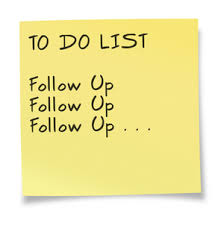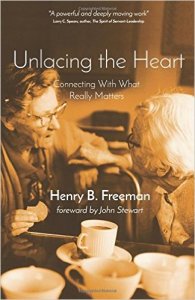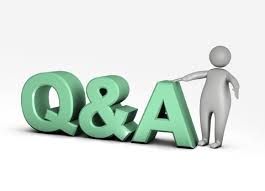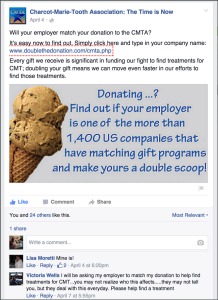 As most of you know, I’ve been traveling A LOT lately and I haven’t had the opportunity to watch a lot of television. However, it seems like every time I have the TV turned on, I’m seeing a television commercial from General Electric (GE) that talks about “ideas”.
As most of you know, I’ve been traveling A LOT lately and I haven’t had the opportunity to watch a lot of television. However, it seems like every time I have the TV turned on, I’m seeing a television commercial from General Electric (GE) that talks about “ideas”.
Have you ever experienced a commercial that grabs you in such a way that you can’t get it out of your head? If so, then you know what I’ve been experiencing for the last month. There is something about this commercial that just speaks truth to me.
If you receive this blog via an email subscription, then click this link to view the “Ideas Are Scary” commercial. If you are viewing this in your browser, then you can click the video image below:
https://www.youtube.com/watch?v=sfmQvc6tB1o
I think this television commercial speaks to me because I routinely see this play out live and in-person as a non-profit consultant. The following are just a few examples:
- Strategic planning discussions where ideas are shot down for any number of reasons ranging from lack of resources to lack of leadership
- Annual campaign planning meetings where volunteers express resistance to sitting down with donors in-person to talk about making a pledge to the campaign (typically rooted in fear)
- Boardroom discussions where investing in organizational capacity building efforts is met with resistance because it means getting outside of an organizational comfort zone
And if this is a common theme in my life, then I know it something with which many non-profit CEOs and fundraising professionals constantly are confronted.
So, today’s post begs the question . . .
What should non-profit leaders do differently to make ideas less scary and improve their ability to lead change?
There has been a fair amount of writing over the last five years on the DonorDreams blog platform by me and number of guest bloggers on the subject of leading change, and the following are a few of my favorites:
- Embrace storytelling as a catalyst for organizational change
- Can’t change your non-profit ways? That’s just BS!
- How to avoid groupthink in your non-profit boardroom
- Change 101: Sell-Sell-Sell and then Strategy-Strategy-Strategy
However, I am left with two questions:
- How can non-profit leaders build an organizational culture that embraces new ideas, creativity and innovation?
- How can non-profit leaders build shared vision among all stakeholders (e.g. staff, board, donors, etc)?
I know the answer to both of these questions includes parts and pieces of the following:
- writing and refining a powerful “case for support” document
- getting the right people sitting around the table
- engaging everyone in the process, hearing their concerns and incorporating their thoughts until everyone has an ownership stake in the idea
 However, there is much, much more to leading change than the simple six step model that some organizational development consulting/training companies teach, and I suspect it has something to do with your organization’s culture. This is where I think all of us can learn from The Walt Disney Company, home of “Imagineering”. (Note: this term is trademarked by Disney)
However, there is much, much more to leading change than the simple six step model that some organizational development consulting/training companies teach, and I suspect it has something to do with your organization’s culture. This is where I think all of us can learn from The Walt Disney Company, home of “Imagineering”. (Note: this term is trademarked by Disney)
I always thought Imagineering was a just an idea the folks at Disney embraced and knit into their corporate culture. However, after a little wiki research, I’ve learned this is a full-blown organizational development concept rooted in:
- org structure
- processes-procedures-systems
- people
- direction setting
If you are a frustrated non-profit leader (either paid staff or volunteer) and want to figure out how to make ideas less scary and more likely to be embraced, my suggestion is to research what works for General Electric (aka the people who “Bring Good Things to Life” and espouse “Imagination at Work”) and The Walt Disney Company (aka home of the imagineer).
You might be surprised by the number of best practices you find and how many you are able to implement at your non-profit organization.
In the meantime, please use the comment box below to share your thoughts and experiences on how you’ve tried to change organizational culture or build shared/common vision. We can all learn from each other.
Here’s to your health!
Erik Anderson
Founder & President, The Healthy Non-Profit LLC
www.thehealthynonprofit.com
erik@thehealthynonprofit.com
http://twitter.com/#!/eanderson847
http://www.facebook.com/eanderson847
http://www.linkedin.com/in/erikanderson847

 In terms of traditional types of giving, past donations are strong indicators of future giving. That trend logically carries over to planned giving.
In terms of traditional types of giving, past donations are strong indicators of future giving. That trend logically carries over to planned giving.  This factor is in reference to those whom your organization positively affected. The range is fairly broad here. A planned gift might be left to a university by a dedicated alumnus.
This factor is in reference to those whom your organization positively affected. The range is fairly broad here. A planned gift might be left to a university by a dedicated alumnus.  Let me start by stating in no uncertain terms that planned giving prospects do not have to be wealthy.
Let me start by stating in no uncertain terms that planned giving prospects do not have to be wealthy.  Factor four encompasses the large gift loophole for planned giving donors. Although they are often comparable in size, unlike major gifts, planned gifts do not inherently require wealth.
Factor four encompasses the large gift loophole for planned giving donors. Although they are often comparable in size, unlike major gifts, planned gifts do not inherently require wealth.  You’ve probably noticed a theme among three of the traits listed above:
You’ve probably noticed a theme among three of the traits listed above: Sarah
Sarah So you have your RSVP list. You know who is coming. What do you do with that information?
So you have your RSVP list. You know who is coming. What do you do with that information?  Much like you can create a pre-event V.I.P. list, you can do the same after the event.
Much like you can create a pre-event V.I.P. list, you can do the same after the event. Albert Einstein defined insanity as doing the same thing over and over again and expecting different results.
Albert Einstein defined insanity as doing the same thing over and over again and expecting different results.  It is a basic truism for some organizational development professionals that “Culture trumps strategy“. In the last few months, this expression has been front and center in my mind. I guess the reason it bothers me is because of its implications, which is none of what I bring to the table as a non-profit and fundraising consultant matters unless the organization’s culture is ready to receive it and act upon it.
It is a basic truism for some organizational development professionals that “Culture trumps strategy“. In the last few months, this expression has been front and center in my mind. I guess the reason it bothers me is because of its implications, which is none of what I bring to the table as a non-profit and fundraising consultant matters unless the organization’s culture is ready to receive it and act upon it. I’ll stop Googling now. Because I think I get it now.
I’ll stop Googling now. Because I think I get it now.
 There are many ways to ask individuals for donations and support, and not every nonprofit asks in the same way. However, a new report from the fundraising
There are many ways to ask individuals for donations and support, and not every nonprofit asks in the same way. However, a new report from the fundraising 
 I came across a cool
I came across a cool  With so many people posting updates, Tweeting the latest news, and hashtagging photos of their lunch, it’s a good idea to jump on the social media bandwagon and utilize different sites to promote matching gifts programs.
With so many people posting updates, Tweeting the latest news, and hashtagging photos of their lunch, it’s a good idea to jump on the social media bandwagon and utilize different sites to promote matching gifts programs.  Slavery ended on December 6, 1865 when the 13th Amendment to the Constitution of the United States was ratified. In a nutshell, this means that people cannot own people anymore. I have a hard time juxtaposing this fact with what I hear some non-profit professionals sometimes say, which is: “. . . that is my donor“.
Slavery ended on December 6, 1865 when the 13th Amendment to the Constitution of the United States was ratified. In a nutshell, this means that people cannot own people anymore. I have a hard time juxtaposing this fact with what I hear some non-profit professionals sometimes say, which is: “. . . that is my donor“. Let’s face it . . . non-profit organizations typically have many competing priorities and projects usually going on simultaneously (e.g. supporting the annual fund, building a new building, renovating an existing space, endowing a program, etc).
Let’s face it . . . non-profit organizations typically have many competing priorities and projects usually going on simultaneously (e.g. supporting the annual fund, building a new building, renovating an existing space, endowing a program, etc).